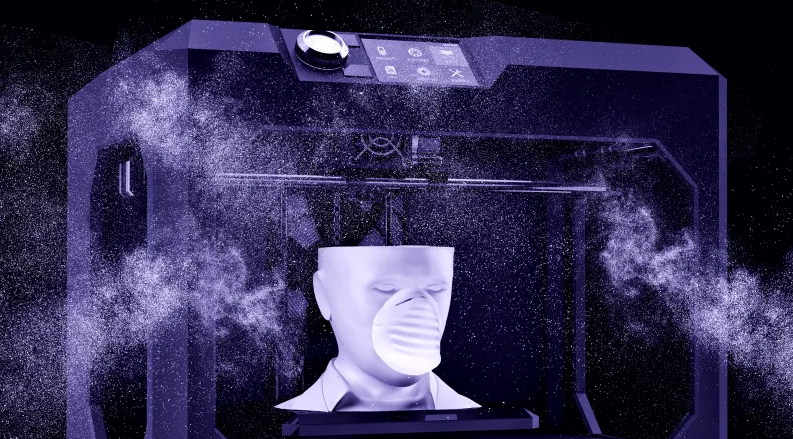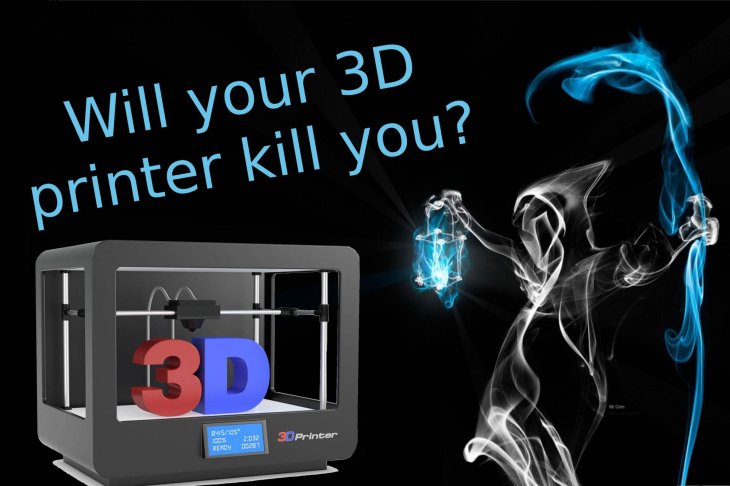Scientists Proved That 3D Printers Can Release Toxic Particles
Aadhya Khatri - Nov 16, 2018

A handful of research has detailed the health risk 3D printers can pose to human by releasing ultra-fine toxic particles into the indoor air.
- Thanks To This 12YO’s Invention, Doctors Won’t Feel Pain From Wearing Face Masks All Day
- This Mummy Talks For The First Time After 3000 Years With A 3D Printed Vocal Tract
- Scientists Are Able To Create Fully Functioning Mini Livers By A 3D Printer
A handful of research has detailed the health risk that 3D printers can pose to human by releasing ultra-fine toxic particles into the indoor air. However, little is known about the characteristics and the magnitude of the emission.
It was not until recent research revealed the conditions under which these particles are released and the fact that 3D printers’ emission comes in a number of varieties that the general public has a clearer idea of how dangerous this incident can be.
Some earlier studies had highlighted that typical desktop 3D printers can be the source of some compounds and particles in the air. However, the true nature of these aerosols still remained a mystery.
To have a closer look into this issue, scientists of the Georgia Institute of Technology and UL Chemical Safety conducted a multi-year study on the impact 3D printers can cause under a controlled environment. The results confirm what the general public worries about, these fine particles can lower the air quality in a room with poor ventilation.
The study raised a concern over the growing popularity of budget printers, which are becoming more and more common in education, health care, and commercial institutes. Marilyn Black, UL’s vice president, and senior technical advisor called for larger investments for research on 3D printer’s health hazard and a greater awareness of the potential risks these machines can bring.
She also highlighted another achievement the team made paving the way for further studies on this problem. The environmental chamber technology, the success in question, enables scientists to gather more precise measurements and more data on the impact on human health.
For the time being, Black confirmed that the particles sourced from 3D printers could travel deep inside human lungs, through which they entered the cells. Pulmonary and cardiovascular effects were the two possible consequences she thought could arise if human inhaled the emission.
Now, let’s look into the details of Black and her team’s research.
For the scale of the study, scientists limited their research to filament fabrication printers which have thermoplastic or other materials that contain nylon as the feedstock. The specific variety they focused on was FDM 3D printers, the ones they believed emit the most UFPs.
The FDM 3D printers work by extruding melted thermoplastic one layer at a time to build 3D objects. This happens to be the most common type of printers all over the world.
A limited number of tests, using chemical and vitro cellular assays, were done with PLA (Polylactic Acid) and ABS (Acrylonitrile Butadiene Styrene), the two most common types of filament. The tests showed a toxic response at some levels, depending on the filament used.
However, what is more concern-worthy is the surprisingly large number of varieties of poisonous compounds and particles. These substances are invisible to bare eyes and many of them have the potential of causing cancers and irritant.
Some of the most common names are formaldehyde (a proven carcinogen), styrene (an irritant), and caprolactam, a notorious compound that has a long list of health hazard. Headaches, gastrointestinal problems, and irritation are just a few of them.
Thanks to this research, the conditions of the toxic emission were brought into the light. The factors involved include the brand that produced the printers, the nozzle’s temperature, the filament’s type, and color. The finding of these elements can lead to the development of a new technology, which can eliminate or at least lessen the toxic emission.
Unfortunately, more studies are required to have a better understanding of 3D printers’ impact on human health. According to the scientists of this research, such studies should be conducted thoroughly, and manufacturers must do what is necessary to reduce the risk. They also stated that customers needed to be informed of the issue.
Black urged 3D Printer users to take the matter into their own hand until the issue is fully addressed. She advised on operating the machine in spaces with good ventilation and staying away from it in the process. Users should also opt for the varieties of machine and feedstock that release the least emission.
Desktop 3D printers have not yet been a revolution but their effect is huge. The recent health problem is not the first. Its two previous impacts concern security and the mass making of illegal devices. Obviously, these printers have more to them than we know.
A recent study has confirmed that 3D printers release fine particles that have a negative impact on human health. This research made a considerable progress in finding out under which circumstances the incident happens and classified some of the compounds sourced from these printers.
Featured Stories

Features - Jul 01, 2025
What Are The Fastest Passenger Vehicles Ever Created?

Features - Jun 25, 2025
Japan Hydrogen Breakthrough: Scientists Crack the Clean Energy Code with...

ICT News - Jun 25, 2025
AI Intimidation Tactics: CEOs Turn Flawed Technology Into Employee Fear Machine

Review - Jun 25, 2025
Windows 11 Problems: Is Microsoft's "Best" OS Actually Getting Worse?

Features - Jun 22, 2025
Telegram Founder Pavel Durov Plans to Split $14 Billion Fortune Among 106 Children

ICT News - Jun 22, 2025
Neuralink Telepathy Chip Enables Quadriplegic Rob Greiner to Control Games with...

Features - Jun 21, 2025
This Over $100 Bottle Has Nothing But Fresh Air Inside

Features - Jun 18, 2025
Best Mobile VPN Apps for Gaming 2025: Complete Guide

Features - Jun 18, 2025
A Math Formula Tells Us How Long Everything Will Live

Features - Jun 16, 2025


Comments
Sort by Newest | Popular